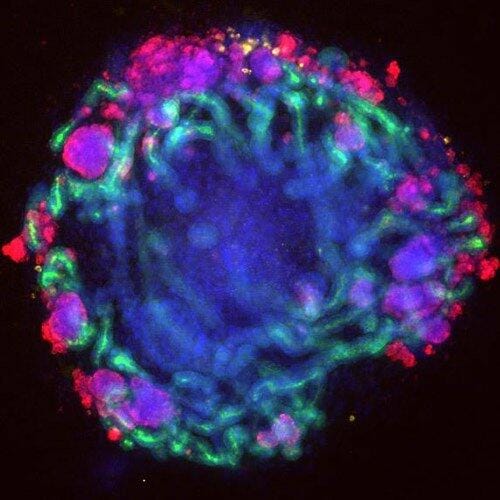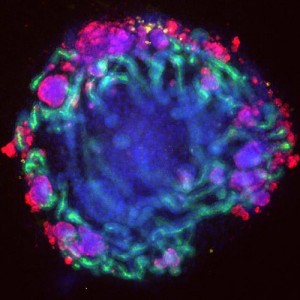CRISPR-Edited Mini-Kidneys as Disease Models


Kidney derived from a patient´s stem cells, of 1 mm diameter. Credit: Benjamin Freedman & Joseph Bonventre labs.
Researchers from the University of Washington have obtained mini-kidneys from CRISPR-edited human pluripotent stem cells, modified to mimick genetic diseases. The organoids work as disease models for clinical trials and facilitate the development of new drugs. The findings where published in the journal Nature Communications.
In vitro 3D cell culture is a powerful tool to study tissue physiology and disease, and allows easy treatment and manipulation. But conventional cell lines are limited to their genetic makeup, hindering greater advances in the applications of 3D culture systems. Despite that, in the last years, the interest in 3D cultures has grown, and exciting improvements have been foreseen, like the introduction of stem cells and genome editing.
Editing stem cells to mimick disease in the derived organoid
The authors of the study were perfectly aware of the direction their field was taking, and started working in trying to obtain 3D cultures that mimicked diseases. To that end, the team used human pluripotent stem cells (hPSCs) to model kidney diseases. They established the optimal growth conditions for the formation of adherent 3D cultures that reconstituted two structures: epiblast spheroids and kidney organoids, which are two different states that arise sequentially from hPSCs. They followed two strategies to modify the hPSCs and transform them into kidney disease-mimicking models: small molecule treatment and genome editing with CRISPR/Cas9. The genomic modifications by CRISPR/Cas9 were based on mutations known to cause two kidney disorders: polycystic kidney disease and glomerulonephritis. The obtained organoids successfully presented specific characteristics of epithelial transport, toxicity response or disease phenotypes of real kidneys. The polycystic organoid formed cysts in the kidney tubules, and the glomerulonephritic model lost filtering cell connections, just as expected from the inflicted mutations.
The results prove that those diseases, and probably many others, can be recreated in vitro with the proper modifications. Clinical trials can be perfomed in culture plates, in organs with the desired genetic makeup, before administering them to humans.
Source: genengnews
